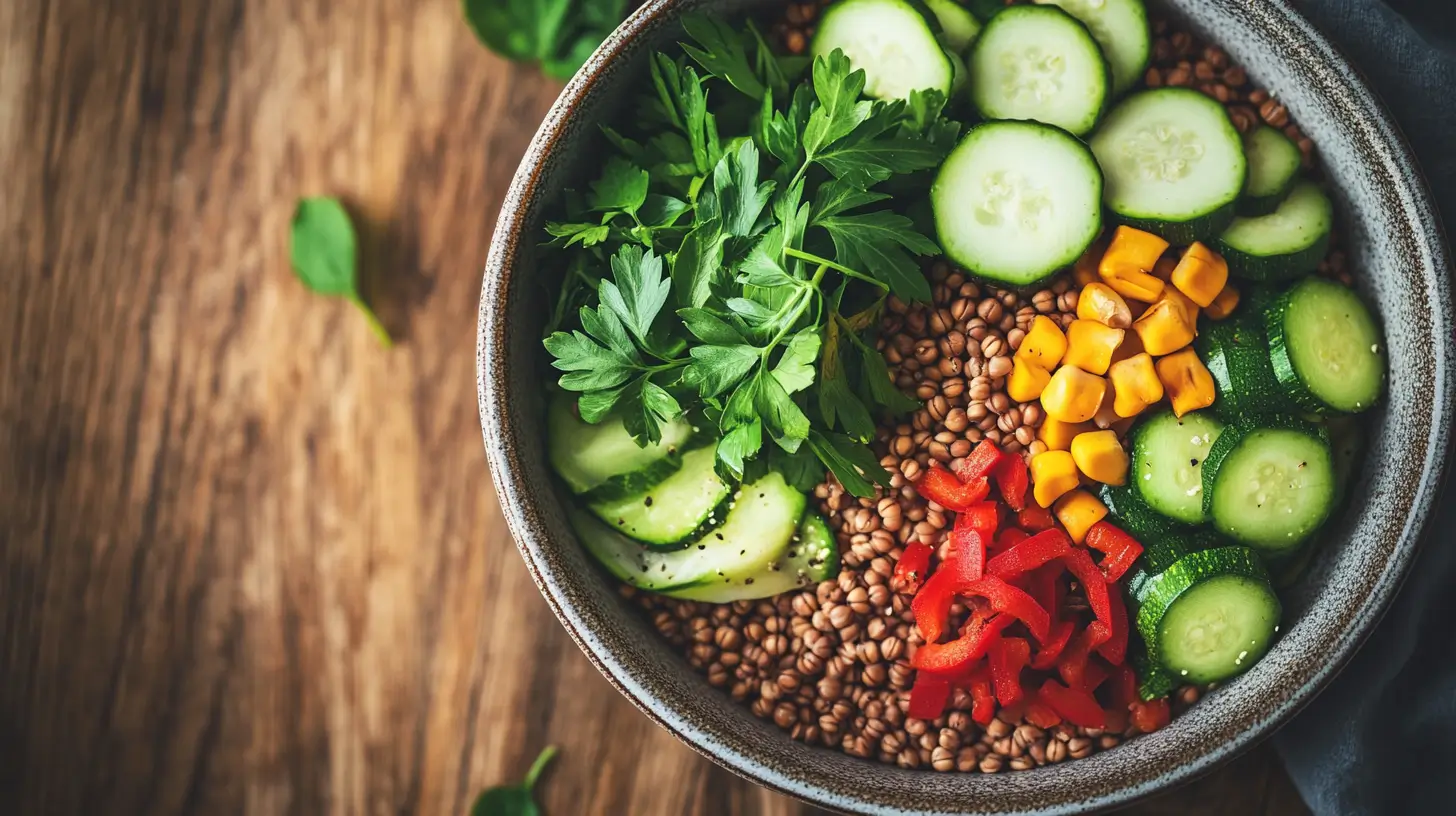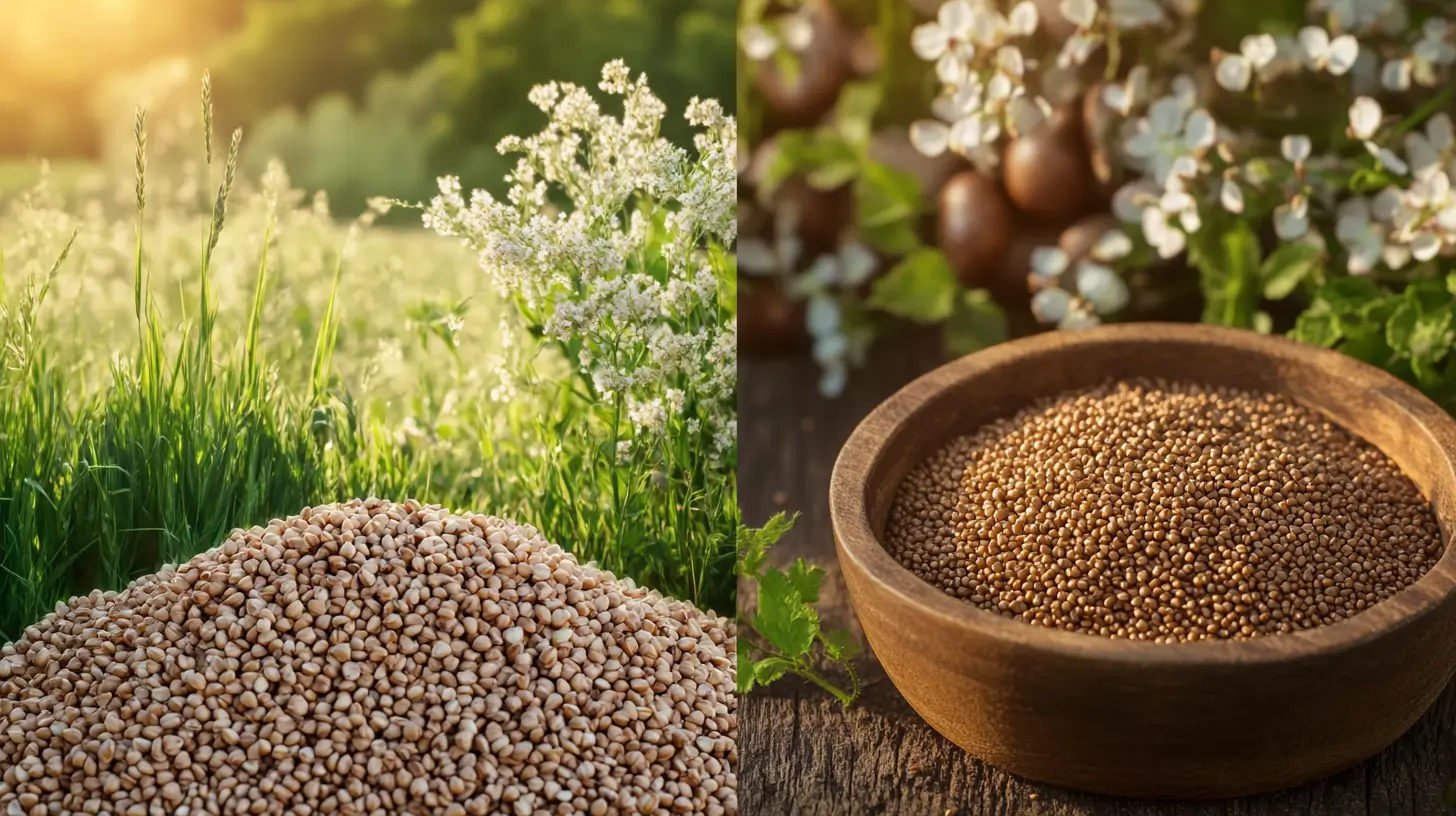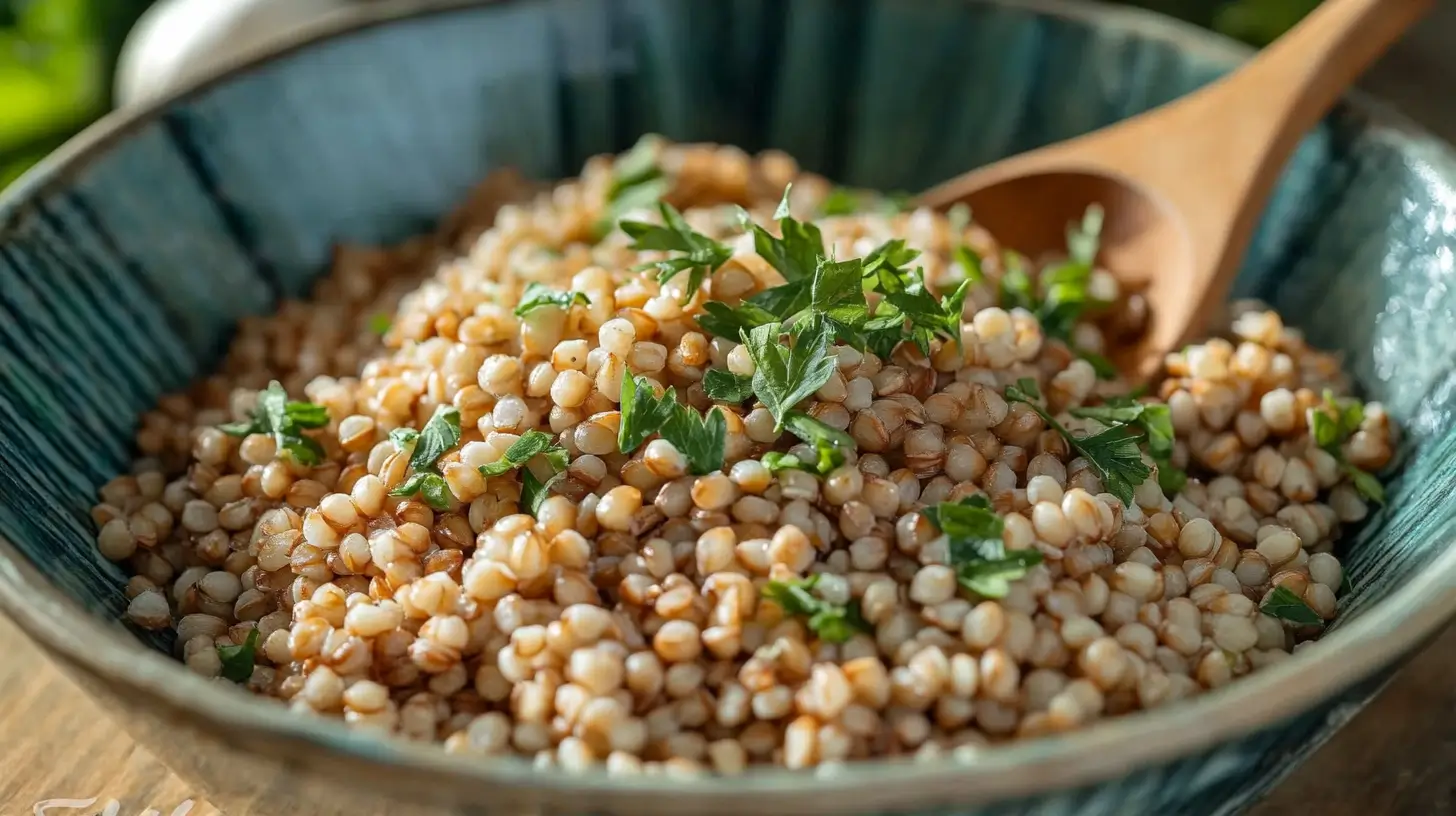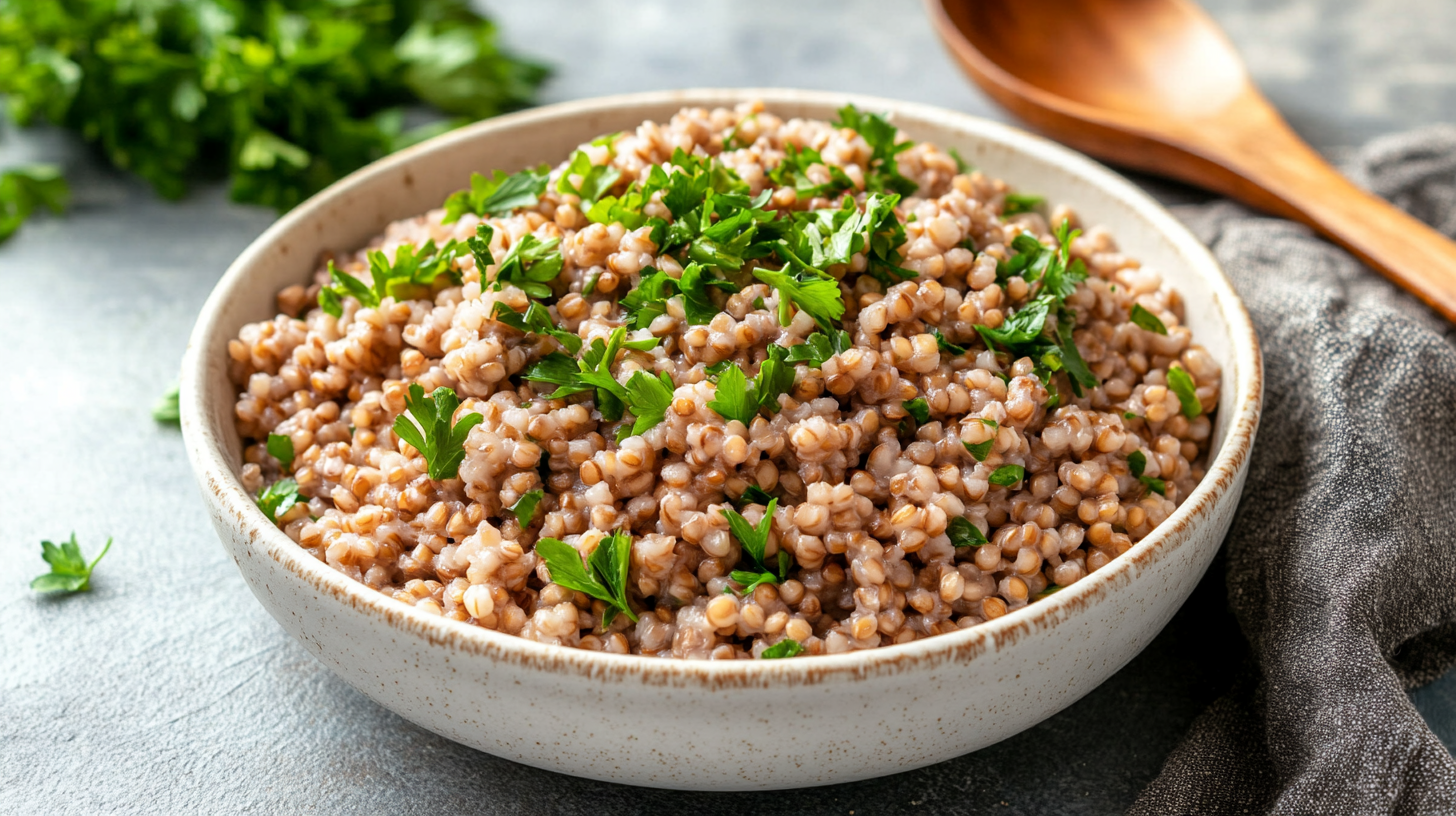When comparing two popular breakfast staples, buckwheat and oatmeal, the question often arises: Is buckwheat better than oatmeal? Both options are nutritious and versatile, but their differences in nutrition, health benefits, and environmental impact may sway your choice. Let’s take a deep dive into understanding these two powerhouses and determining which might be better suited to your needs.
Understanding Buckwheat and Oatmeal
What Is Buckwheat? Exploring Its Role in the Buckwheat vs. Oatmeal Debate
Buckwheat is a nutrient-packed pseudocereal that belongs to the Polygonaceae family. Unlike true grains, it is a seed, making it suitable for gluten-free diets. Despite its name, buckwheat is not related to wheat. This versatile ingredient is commonly used in groats, noodles, and flour for various recipes. It boasts a nutty flavor and is rich in essential nutrients like magnesium, manganese, and dietary fiber.
Additionally, buckwheat is a complete protein source, containing all nine essential amino acids. This unique feature gives it an edge for those seeking plant-based protein sources. Buckwheat is not only a culinary favorite but also a symbol of sustainable farming due to its ability to grow in poor soil conditions with minimal pesticides.
What Is Oatmeal? A Look at Oatmeal in the Buckwheat vs. Oatmeal Comparison
Oatmeal is derived from oats, a whole grain that has been a dietary staple for centuries. Known for its versatility, oatmeal comes in various forms, including rolled oats, steel-cut oats, and instant oats. It has a mild, slightly sweet flavor, making it an excellent base for both savory and sweet dishes.
Rich in beta-glucans, a type of soluble fiber, oatmeal supports heart health by lowering cholesterol levels. It also provides complex carbohydrates, ensuring steady energy release throughout the day. Oatmeal’s adaptability in meal preparation and its impressive nutrient profile make it a favorite for health-conscious individuals worldwide.
Nutritional Comparison of Buckwheat and Oatmeal
Macronutrient Profile
When asking is buckwheat better than oatmeal in terms of macronutrients, both have unique strengths. Per 100 grams (cooked):
- Buckwheat:
- Calories: ~90
- Protein: 3.4 g
- Carbohydrates: 19.9 g
- Fiber: 2.7 g
- Fat: 0.6 g
- Oatmeal:
- Calories: ~70
- Protein: 2.4 g
- Carbohydrates: 12 g
- Fiber: 1.7 g
- Fat: 1.4 g
Buckwheat offers higher protein content and slightly more fiber, making it ideal for satiety and muscle maintenance. Meanwhile, oatmeal has fewer calories and more fat, which contributes to a creamy texture.
Micronutrient Highlights
- Buckwheat is a rich source of:
- Magnesium: Supports bone health and muscle function.
- Manganese: Vital for metabolism.
- Copper: Essential for energy production.
- Oatmeal excels in:
- Iron: Crucial for oxygen transport in blood.
- Zinc: Strengthens immunity.
- Selenium: Protects against oxidative stress.
Each offers unique micronutrient benefits, but buckwheat may edge out for its higher antioxidant levels.
Health Benefits of Buckwheat
Rich in Antioxidants: Does Buckwheat Beat Oatmeal?
Buckwheat is packed with antioxidants like rutin and quercetin, which combat oxidative stress and inflammation. These compounds are linked to reduced risks of chronic diseases, such as cardiovascular issues and certain cancers.
Gluten-Free Option: Why Buckwheat May Be Better Than Oatmeal
For those with gluten intolerance or celiac disease, buckwheat provides a naturally gluten-free alternative. Unlike some gluten-free grains, it offers robust nutrition, including a complete amino acid profile.
Health Benefits of Oatmeal
Heart Health Support
One of the key advantages of oatmeal is its high beta-glucan content. This soluble fiber lowers LDL cholesterol and improves heart health, making oatmeal a staple for cardiovascular wellness.
Blood Sugar Regulation
With a low glycemic index, oatmeal helps stabilize blood sugar levels, preventing sudden spikes. It’s particularly beneficial for individuals managing diabetes or seeking sustained energy throughout the day.
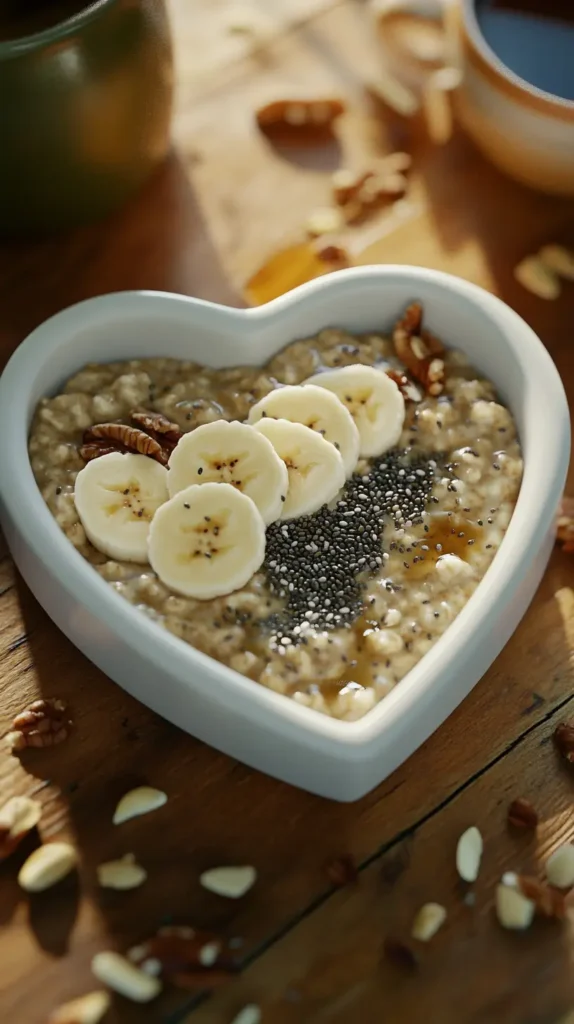
Dietary Preferences and Restrictions
Best for Gluten-Free Diets
When considering is buckwheat better than oatmeal for gluten-free diets, buckwheat is the clear winner. While oatmeal can be gluten-free, cross-contamination often occurs during processing. For strict gluten-free diets, buckwheat is the safer choice.
Best for Low-FODMAP Diets
Oatmeal shines as a low-FODMAP option, suitable for individuals with irritable bowel syndrome (IBS). Its gentle fiber content supports digestion without triggering discomfort, while buckwheat may be less suitable for some due to its slightly higher fermentable fiber content.
Sustainability and Environmental Impact
Farming Practices for Buckwheat
Buckwheat is highly sustainable. It requires minimal fertilizers, grows quickly, and thrives in poor soil. Its natural pest resistance reduces the need for chemical pesticides, making it an eco-friendly crop choice.
Farming Practices for Oatmeal
While oats are generally sustainable, they demand more water and resources than buckwheat. Conventional oat farming often involves herbicides, though organic farming practices are reducing this impact. Compared to buckwheat, oats may have a slightly higher environmental footprint.
Culinary Uses and Versatility
How to Use Buckwheat in Recipes
Buckwheat shines in its versatility, being adaptable for savory and sweet dishes alike. Its nutty flavor enhances a variety of meals:
- Breakfast: Cook buckwheat groats as a porridge with nuts, fruits, and honey.
- Lunch/Dinner: Use buckwheat noodles (soba) in stir-fries or soups.
- Baking: Substitute buckwheat flour in pancakes, muffins, and bread.
- Snacks: Toast buckwheat seeds for a crunchy topping on salads or yogurt.
Because of its unique taste and texture, buckwheat pairs well with spices, herbs, and rich sauces. It also cooks quickly, making it a convenient choice for time-strapped home cooks.
How to Use Oatmeal in Recipes
Oatmeal offers endless possibilities, especially for breakfast lovers:
- Classic Oatmeal Bowl: Combine rolled oats with milk or water, and top with fruits, seeds, or syrups.
- Baking: Incorporate oats into cookies, granola bars, and bread.
- Savory Dishes: Prepare oat risottos or use oats as a filler for veggie patties.
- Smoothies: Blend oats into shakes for added texture and nutrition.
Oatmeal’s neutral flavor makes it a blank canvas for culinary creativity. Its various forms—steel-cut, rolled, or instant—allow customization based on taste and preparation time.
Price and Availability
Affordability of Buckwheat
Buckwheat tends to be slightly more expensive than common grains, primarily due to its limited production and niche market appeal. Organic buckwheat groats or flour often come at a premium, though they’re still readily available in specialty health stores and online. That said, its impressive nutrient profile makes buckwheat a worthwhile investment for those prioritizing health and quality ingredients.
Affordability of Oatmeal
Oatmeal remains one of the most cost-effective whole grains available. Offered in a variety of forms—from instant to steel-cut—it consistently maintains a low price point. Its wide availability in supermarkets and bulk sections makes it especially practical for families and anyone seeking an affordable, nutritious staple for daily use.
Scientific Studies Comparing Buckwheat and Oatmeal
Key Research Findings
Numerous studies have explored is buckwheat better than oatmeal by comparing their health benefits:
- Buckwheat: Research highlights its high rutin content, which helps lower blood pressure and reduce inflammation. It’s also noted for its prebiotic effects on gut health.
- Oatmeal: Studies emphasize oatmeal’s ability to lower LDL cholesterol due to beta-glucans. Additionally, oatmeal improves insulin sensitivity, aiding in blood sugar control.
Both foods are linked to reduced risks of cardiovascular diseases, but their mechanisms differ based on their unique nutrient profiles.
What the Experts Say
Nutritionists agree that buckwheat and oatmeal are excellent additions to a balanced diet. While some experts praise buckwheat’s complete protein profile and antioxidant content, others highlight oatmeal’s role in heart health and digestion. Ultimately, the best choice depends on dietary needs, with experts recommending integrating both for optimal health benefits.
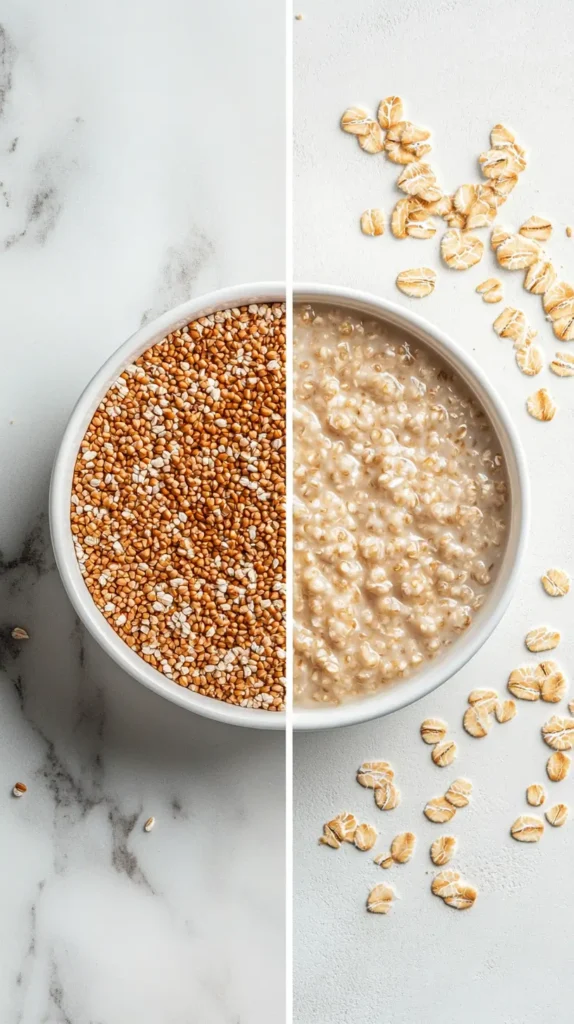
Pros and Cons of Buckwheat and Oatmeal
Buckwheat Pros and Cons
Pros:
- Naturally gluten-free.
- High in antioxidants like rutin.
- A complete protein source.
- Environmentally sustainable crop.
Cons:
- Slightly higher cost.
- Distinct taste may not appeal to everyone.
- Limited availability in some regions.
Oatmeal Pros and Cons
Pros:
- Budget-friendly and widely accessible.
- Rich in beta-glucans for heart health.
- Versatile in both sweet and savory recipes.
- Low-FODMAP option for sensitive stomachs.
Cons:
- Risk of gluten contamination in non-certified brands.
- Higher environmental impact compared to buckwheat.
- Lower protein content than buckwheat.
Common Myths and Misconceptions
Myths About Buckwheat
- “Buckwheat is a grain.”
Despite its grain-like use, buckwheat is a seed and not a true grain, making it ideal for grain-free diets. - “Buckwheat tastes bitter.”
While raw buckwheat can have a strong flavor, toasting or cooking it properly enhances its nutty taste. - “Buckwheat is difficult to cook.”
On the contrary, buckwheat groats cook as easily as rice or quinoa, often in under 15 minutes.
Myths About Oatmeal
- “Oatmeal is boring.”
With the right toppings and recipes, oatmeal can be as exciting and flavorful as you make it. - “All oats are gluten-free.”
While oats are naturally gluten-free, cross-contamination is common unless certified as gluten-free. - “Oatmeal causes weight gain.”
On its own, oatmeal is low in calories. Overindulgence in sugary toppings may contribute to calorie excess.
FAQs About Buckwheat and Oatmeal
Is buckwheat a carb or protein?
Buckwheat is primarily a carbohydrate but also contains a notable amount of protein. Around 70–75% of its calories come from carbohydrates, making it a great source of energy. However, what sets buckwheat apart is its protein profile. Unlike most plant-based foods, buckwheat is a complete protein, meaning it provides all nine essential amino acids. This makes it an excellent choice for those looking to boost their protein intake while maintaining a high-carb diet for energy.
Is buckwheat a superfood?
Yes, buckwheat is often considered a superfood due to its impressive nutritional benefits. It is rich in antioxidants like rutin and quercetin, which combat inflammation and oxidative stress. Additionally, it contains fiber, magnesium, manganese, and copper, all essential for maintaining overall health. Its gluten-free nature and high-quality protein make it a top choice for health-conscious individuals. The sustainability of buckwheat cultivation further enhances its reputation as a superfood.
Buckwheat or oatmeal?
When deciding between buckwheat and oatmeal, the choice depends on your dietary needs:
- Choose buckwheat if you need a gluten-free option, want a complete protein source, or are looking for a food rich in antioxidants.
- Choose oatmeal if you prioritize heart health, blood sugar regulation, or are following a low-FODMAP diet.
Incorporating both into your diet allows you to enjoy their unique health benefits.
Should you rinse buckwheat?
Yes, you should rinse buckwheat before cooking, especially raw buckwheat groats. Rinsing removes any residual dust, debris, or bitterness from the outer coating. If you’re using toasted buckwheat (kasha), rinsing is less critical, but a quick wash can still improve the final texture of your dish. Be sure to drain it thoroughly before cooking for optimal results.
Conclusion: Which One Is Better?
So, is buckwheat better than oatmeal? The answer largely depends on your dietary preferences, health goals, and culinary needs.
- Choose buckwheat for its complete protein, gluten-free assurance, and antioxidant richness. It’s perfect for those seeking a nutrient-dense, eco-friendly option.
- Opt for oatmeal if affordability, heart health benefits, and recipe versatility are your priorities. It’s ideal for families and individuals with low-FODMAP requirements.
Ultimately, incorporating both buckwheat and oatmeal into your meals can provide a well-rounded mix of nutrients, flavors, and health benefits.


